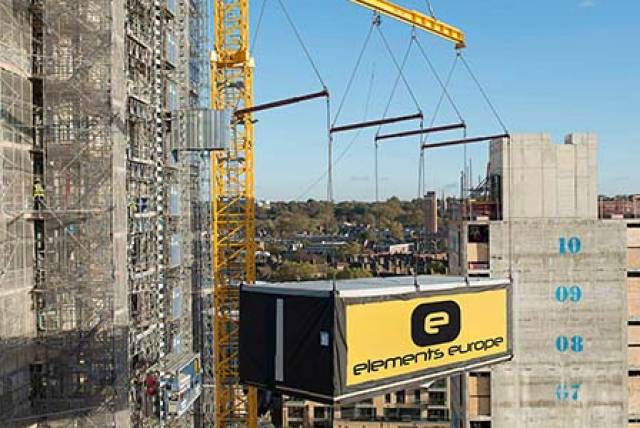Why Modular Construction Means Improved Health & Safety
Statistics released from the Health and Safety Executive this week names construction as the most dangerous industry to work within, in the UK.
However, one of the many benefits modular construction boasts is that it improves health and safety.
Construction sites can be a chaotic place at times with potentially hundreds of tradesmen working alongside each other on various tasks. Each have their own agendas, therefore some simple health and safety measures can be over looked.
However, at Elements Europe’s manufacturing facility in the West Midlands, each project is meticulously planned, and each module is produced one by one each with specific tasks to be complete within a specific time frame.
For our workers this means that everyone is working efficiently to ensure that their tasks are complete at the right time in the right place and because one module is focused on at a time, concentration is improved. All workers are clear as to what their co-worker is doing alongside them and tasks are repetitive for each module, therefore the chance of any accident is reduced.
Weather and seasonal changes can play a dangerous role on building sites with slippery surfaces and dark evenings restricting visibility. However in the factory environment of modular construction these issues are eradicated. The projects programme also benefits from a factory environment, as no matter what the weather, the same tasks get done, something that can’t always be said for traditional construction.
Accidents from working at height accounted for 60% percentage of injuries on-site during 2015-2016, however with room modules no taller than 3 metres high and all employees involved in any work at height within Elements Europe’s factory receive extensive training via an accredited provider prior to undertaking any work at height, this potential risk is eradicated.
Juliet Powell, Health and Safety Manager at Elements Europe commented “We continually monitor all manufacturing processes to ensure the very best health and safety practises are being followed and to promote a positive health and safety culture throughout the site.
“This is a much more measurable task than on-site health and safety practice as workers follow standardised work flows, have their own specialisation, understand their duties and understand their surroundings, meaning fewer accidents”. Juliet added.


